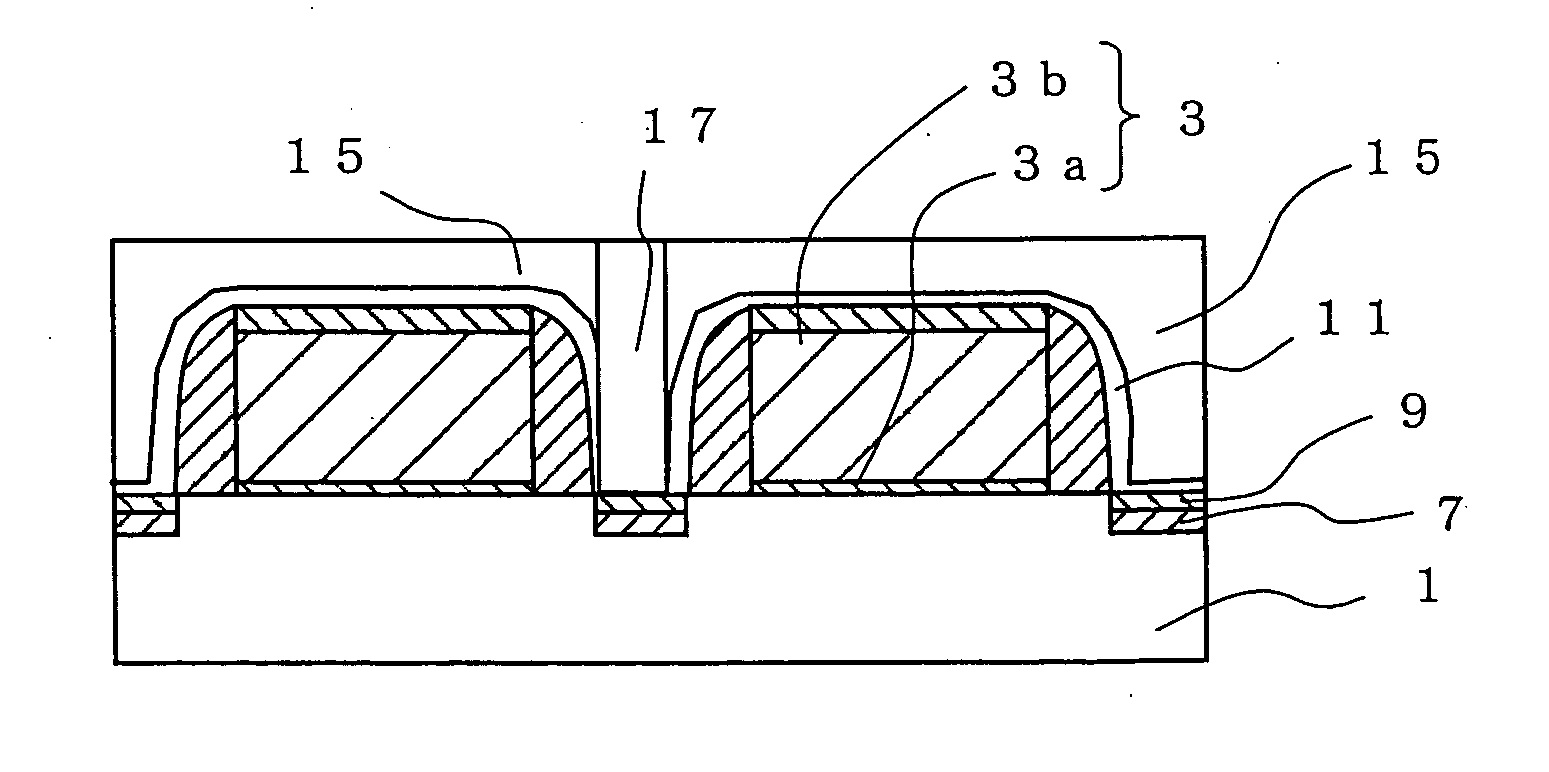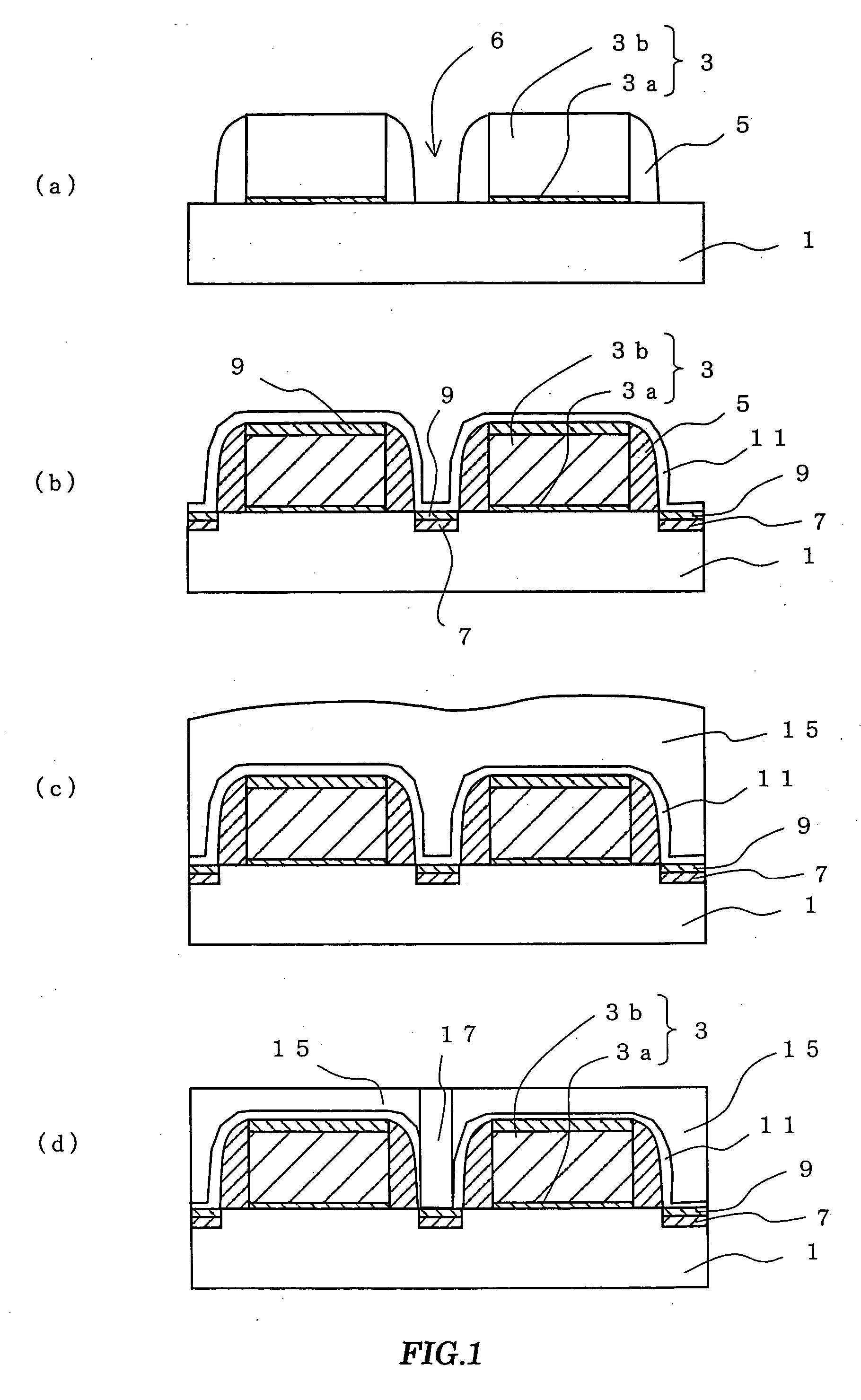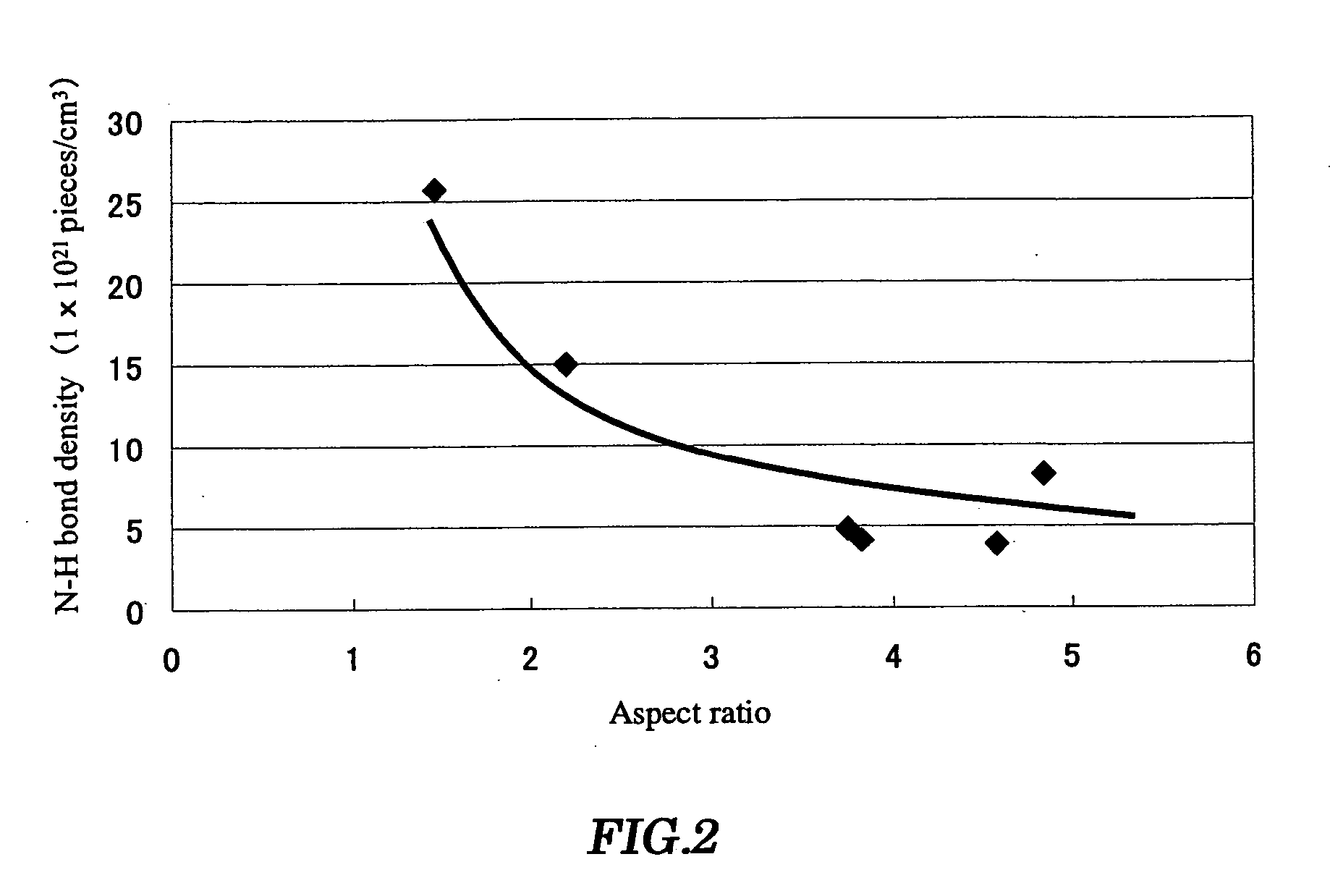Method for forming interlayer insulation film
a technology of interlayer insulation and film, which is applied in the direction of semiconductor/solid-state device details, chemical vapor deposition coating, coating, etc., can solve the problems of insufficient security of transistor characteristics such as suppression of short channel effect and driving current, and the inability to use high-temperature annealing conditions, etc., to achieve short period of time and reduce damage applied to semiconductor devices.
- Summary
- Abstract
- Description
- Claims
- Application Information
AI Technical Summary
Benefits of technology
Problems solved by technology
Method used
Image
Examples
example 1
[0054]FIG. 1 is a sectional view showing a method for forming an interlayer insulation film according to Example 1 of the present invention. Hereinafter, the method for forming the interlayer insulation film according to the present Example will be described with reference to FIG. 1.
[0055] First, a polysilicon film 3b is formed through a gate insulating film 3a on a semiconductor substrate 1, and the polysilicon film 3b is then patterned to form a gate pattern 3. Next, a silicon oxide film or a silicon nitride film is formed on the entire surface of the substrate 1 so as to cover the gate pattern 3, and is etched back and removed using dry etching. Sidewalls 5 are then formed at the sidewalls of the gate pattern 3 by the residual silicon oxide film or silicon nitride film, obtaining a structure shown in FIG. 1(a). At this time, the step parts 6 are formed between the gate patterns 3.
[0056] Next, source / drain regions 7 are formed in a self-alignment manner using the gate patterns 3...
example 2
[0072]FIG. 2 shows the relationship between the aspect ratio of a step part between gates and the N—H bond density of a silicon nitride film for embedding a BPSG film in which voids do not occur in the step part between the gates. Herein, the term “aspect ratio” means a distance between the substrate and the upper surface of the gate pattern / a distance between sidewalls on the surface of the substrate. The distance between the sidewalls was determined by using a SEM.
[0073] The occurrence of voids can be suppressed in the step part by selecting film formation conditions of the silicon nitride film such that the relationship between the aspect ratio and the N—H bond density of the silicon nitride film is in a lower area of the characteristics curve inFIG. 2. The N—H bond density is measured by Fourier Transform Infrared spectroscope (FTS-40) manufactured by Bio-Rad Company.
[0074] Particularly, the graph of FIG. 2 was obtained in the following manner. First, samples in which depth of...
PUM
| Property | Measurement | Unit |
|---|---|---|
| temperature | aaaaa | aaaaa |
| temperature | aaaaa | aaaaa |
| aspect ratio | aaaaa | aaaaa |
Abstract
Description
Claims
Application Information
 Login to View More
Login to View More - R&D
- Intellectual Property
- Life Sciences
- Materials
- Tech Scout
- Unparalleled Data Quality
- Higher Quality Content
- 60% Fewer Hallucinations
Browse by: Latest US Patents, China's latest patents, Technical Efficacy Thesaurus, Application Domain, Technology Topic, Popular Technical Reports.
© 2025 PatSnap. All rights reserved.Legal|Privacy policy|Modern Slavery Act Transparency Statement|Sitemap|About US| Contact US: help@patsnap.com



